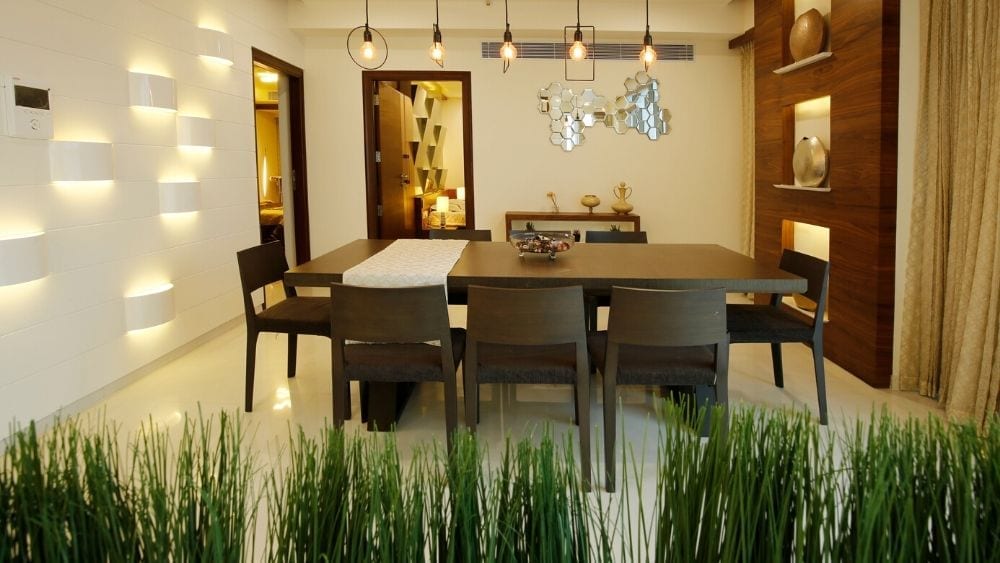Transforming your dining room to suit any occasion doesn’t require a magic wand, but a few clever design choices and versatile furniture pieces can make all the difference. Whether you’re hosting a formal dinner party, a casual get-together, or anything in between, here’s how you can create a space that adapts to your needs and enhances every gathering.
Optimal Layouts for Flexibility
The layout of your dining room plays a crucial role in its functionality. Consider employing an extendable dining table that can easily adjust in size to accommodate different numbers of guests. Pair this with stackable chairs that can be stored away or brought out as needed. Ensure there is ample space around the table for guests to move comfortably, which might mean selecting sleek, non-bulky furniture that maximizes the room’s potential.
Lighting: Set the Right Mood
Lighting can dramatically alter the atmosphere of a room. Install a dimmable chandelier or pendant lights above the dining table to provide soft light for evening events and brighter light for daytime gatherings. Adding adjustable wall sconces can also enhance the ambiance and offer flexibility to illuminate specific areas of the room based on the occasion.
Color Schemes that Adapt
Choose a neutral color palette for walls and major furniture pieces. Neutrals don’t have to be boring; textures and layers can add depth and interest. For occasions that call for a bit more flair, incorporate vibrant table runners, napkins, or seat cushions. These can be easily changed according to the event’s theme or season, making your dining area both adaptable and stylish.
Smart Storage Solutions
A well-organized space is key to versatility. Opt for sideboards or buffets that offer both storage and surface area. These can be used to store additional dinnerware and linens while providing a platform for decorative elements or serving dishes during parties. If space allows, consider a built-in cabinet with glass doors to showcase fine china or collectibles that can act as a conversation starter.
Decor that Doubles Up
Decorations in your dining room should serve both aesthetic and practical purposes. Mirrors, for instance, not only add a touch of elegance but also make small dining spaces appear larger and more open. Artwork can reflect personal style and be swappe out to match the theme of different gatherings, helping to set the appropriate mood.
Technology at the Table
Incorporate subtle forms of modern technology to enhance the dining experience. A hidden speaker system can provide background music that sets the tone without taking up valuable space. Smart, color-changing light bulbs can also be adjuste from your smartphone, allowing the room’s ambiance to change with the swipe of a finger.
Seasonal and Thematic Flexibility
With a base of neutral tones in furniture and walls. It’s easy to adapt your dining room decor to various seasons and themes. For a spring gathering, fresh flowers and pastel colors can brighten the space. In the winter, richer tones and shimmering accents can make the room cozy and inviting for holiday celebrations.
Creating a Focal Point
Every dining room needs a focal point, whether it’s a bold piece of art, an intricate light fixture, or a beautifully set table. This central point can draw the eye and set the tone for the rest of the room. It should reflect the overall style of the home but also possess enough versatility to adapt to different decorating styles for various occasions.
Engaging the Senses
Think beyond sight. Soft textiles like a high-quality rug or drapes can soften the room acoustically and physically, making it more welcoming. The tactile experience of luxurious table linens or well-crafted dinnerware can also enhance the dining experience, making guests feel cared for and comfortable.
Conclusion
A dining room that shifts seamlessly from formal to casual not only makes your home more functional but also more enjoyable. By focusing on flexible furniture, mood-setting lighting, and adaptable decor. Your dining space can be ready for anything from high tea to family game nights. Remember, the ultimate goal is to create a welcoming atmosphere that encourages guests to linger and enjoy their surroundings.


